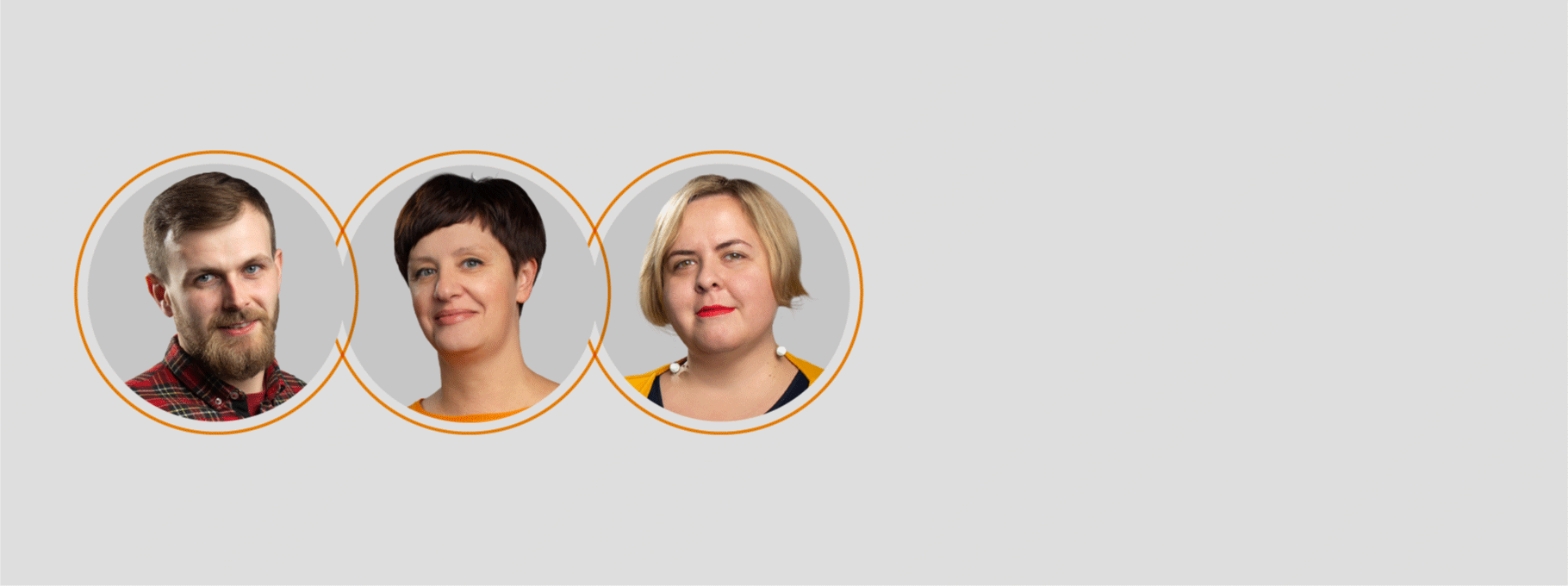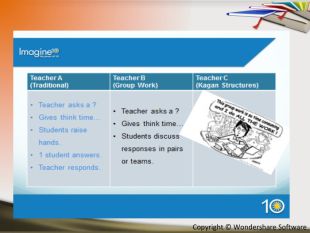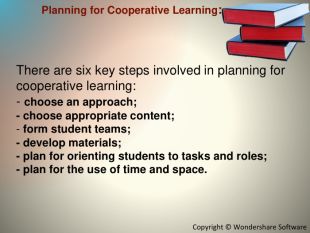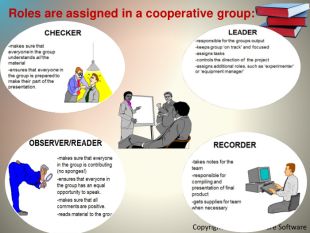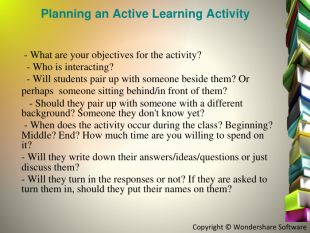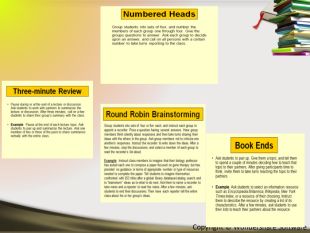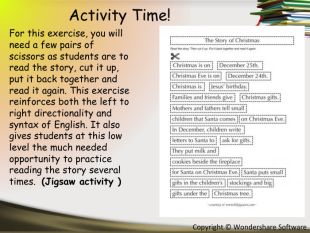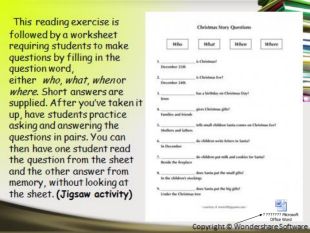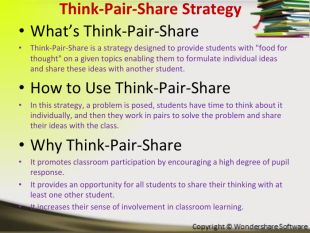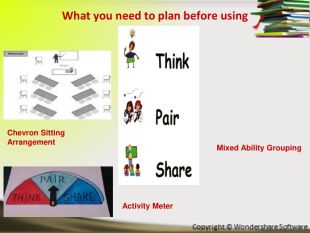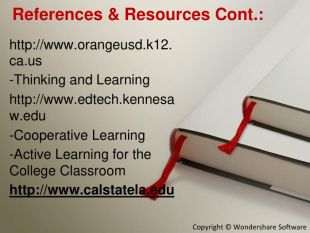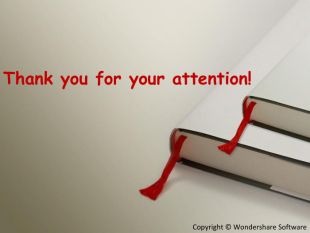Презентація «Інтерактивні технології кооперативного навчання на уроках англійської мови»


































Workshop Objectives. By the end of this workshop, participants will be able to :- Discuss Changing Paradigm of Teaching- Define “cooperative learning”- Discuss reasons for using cooperative learning in our classrooms - Identify elements of cooperative learning- Identify and practice some cooperative learning strategies
Cooperative learningis a successful teaching strategy in which small teams, each with students of different levels of ability, use a variety of learning activities to improve their understanding of a subject. Each member of a team is responsible not only for learning what is taught but also for helping teammates learn, thus creating an atmosphere of achievement. Students work through the assignment until all group members successfully understand and complete it. Cooperative learning occurs whenever students interact in pairs or groups to share knowledge and experiences.
RESEARCH (John Dewey, Kurt Koffka, Jean Piaget, and Lev Vygotzky)HAS SHOWN THAT COOPERATIVE LEARNING TECHNIQUES:promote student learning and academic achievement;increase student retention;enhance student satisfaction with their learning experience;help students develop skills in oral communication;develop students’ social skills;promote student self-esteem;help to promote positive race relations.
Types Of Cooperative Learning: Base Groups: are long-term, heterogeneous groups. Provide support. Encouragement. Assistance to progress academically. Formal Groups: Students working together, from one class period to several weeks, to achieve shared learning goals and complete jointly specific tasks and assignments. Informal Groups: Students work together to achieve a joint learning goal, last from a few minutes to one class period. Cooperative learning works best when group size is smaller.
Monitoring of Groups by the Facilitator. Group rules: Listening with intent ; No ridiculing of ideas ; Taking turns in giving views ; No dominance of a few ; Giving encouragement to others; Offering assistance to others Group Formation Guidelines. Be guided by the following questions: Are students working towards a common goal?Are they actively participating?Are they listening to one another's perspectives?Are they asking one another questions when they don't understand?Are they criticizing and reviewing ideas rather than the individuals?
Planning an Active Learning Activity - What are your objectives for the activity? - Who is interacting? - Will students pair up with someone beside them? Or perhaps someone sitting behind/in front of them? - Should they pair up with someone with a different background? Someone they don't know yet? - When does the activity occur during the class? Beginning? Middle? End? How much time are you willing to spend on it? - Will they write down their answers/ideas/questions or just discuss them? - Will they turn in the responses or not? If they are asked to turn them in, should they put their names on them?
Activity Time! For this exercise, you will need a few pairs of scissors as students are to read the story, cut it up, put it back together and read it again. This exercise reinforces both the left to right directionality and syntax of English. It also gives students at this low level the much needed opportunity to practice reading the story several times. (Jigsaw activity )
Think-Pair-Share Strategy. What’s Think-Pair-Share. Think-Pair-Share is a strategy designed to provide students with "food for thought" on a given topics enabling them to formulate individual ideas and share these ideas with another student. How to Use Think-Pair-Share. In this strategy, a problem is posed, students have time to think about it individually, and then they work in pairs to solve the problem and share their ideas with the class. Why Think-Pair-Share. It promotes classroom participation by encouraging a high degree of pupil response. It provides an opportunity for all students to share their thinking with at least one other student. It increases their sense of involvement in classroom learning.
Procedure for Think-Pair-Share. Step One: Think. Have students reflect on a given question or write a response in their journals. Step Two: Pair. Have students pair up with one other student and share their responses. Step Three: Share. When the larger group reconvenes, ask pairs to report back on their conversations. Alternatively, you could ask students to share what their partner said.
gain from each others efforts. ( Your success benefits me and my success benefits you.)know that one’s performance is mutually caused by oneself and one’s team members. ( We cannot do it without you.)feel proud and jointly celebrate when a group member is recognized for achievement. ( We all congratulate you on your accomplishment!)Cooperative efforts result in participants striving for mutual benefit so that all group members:orecognize that all group members share a common fate. (We all sink or swim together here.)rrrr
References & Resources: David and Roger Johnson. "Cooperative Learning." [Online] 15 October 2001. http://www.clcrc.com/pages/cl.html. David and Roger Johnson. "An Overview of Cooperative Learning." [Online] 15 October 2001. http://www.clcrc.com/pages/overviewpaper.html. Howard Community College's Teaching Resources. "Ideas on Cooperative Learning and the use of Small Groups." [Online] 15 October 2001. http://www.howardcc.edu/profdev/resources/learning/groups1.htm. Kagan, Spencer. "Kagan Structures for Emotional Intelligence." [Online] 15 October 2001. "http://www.kagancooplearn.com/Newsletter/1001/index.html. College Level One — Collaborative Learning Page. On the web at:http://www.wcer.wisc.edu/nise/cl1/CL/resource/R1.asp. Panitz, T. (1996). A Definition of Collaborative vs Cooperative Learning. On the web at: http://www.lgu.ac.uk/deliberations/collab.learning/panitz2.html


про публікацію авторської розробки
Додати розробку
